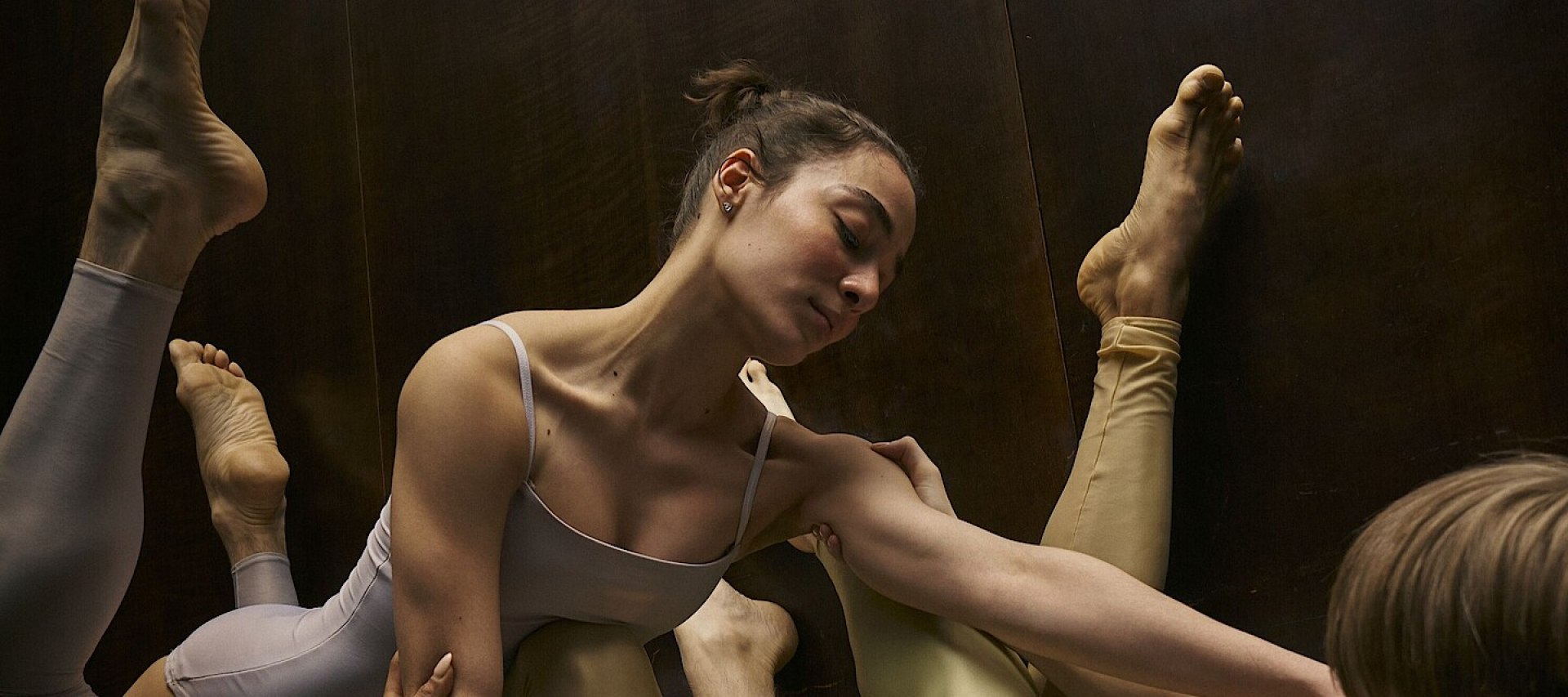Minus 16
Mo | Tu | We | Th | Fr | Sa | Su |
SAABA / Minus 16
Ballet and dance companies worldwide collaborate with Ohad Naharin. The Israeli choreographer has been a prominent figure in the dance world for many years. He developed a new approach to movement with his company, the Batsheva Dance Company in Tel Aviv. The approach demands a personal touch from the dancers and is known as the Gaga method. The method requires complete openness to embrace movement material beyond steps and musicality. Naharin's half-hour piece Minus 16 is a lively choreography performed by a large ensemble. The dancers move with exuberant joy and acrobatic boldness to the sounds of popular Cuban and Israeli music. The piece premiered at Nederlands Dans Theater II in 1999 and has since been a celebration of the joy of dance and joie de vivre that captivates both dancers and audiences. SAABA is the fourth work by internationally acclaimed choreographer Sharon Eyal to be presented by the Staatsballett Berlin. Another and completely new one of her mysterious universes unfolds in an unmistakable manner. This time, composer Ori Lichtik skillfully weaves pop into the musical composition, which alternates between genres. Sharon Eyal‘s unmistakable style of hypnotic, pulsating power also unleashes its full effect in this sound spectrum.
Program and cast
Choreography: Sharon Eyal, Ohad Naharin
Co-Choreography: Gai Behar
Music: Ori Lichtik, Dick Dale, Tractor's Revenge, Ohad Naharin, Antonio Vivaldi, Harold Arlen & Marusha, Frédéric Chopin
Costumes: Maria Grazia Chiuri for DIOR, Ohad Naharin
Lighting: Alon Cohen, Avi Yona "Bambi" Bueno
Deutsche Oper Berlin
The Deutsche Oper Berlin is an opera company located in the Charlottenburg district of Berlin, Germany. The resident building is the country's second largest opera house and also home to the Berlin State Ballet.
The company's history goes back to the Deutsches Opernhaus built by the then independent city of Charlottenburg—the "richest town of Prussia"—according to plans designed by Heinrich Seeling from 1911. It opened on November 7, 1912 with a performance of Beethoven's Fidelio, conducted by Ignatz Waghalter. After the incorporation of Charlottenburg by the 1920 Greater Berlin Act, the name of the resident building was changed to Städtische Oper (Municipal Opera) in 1925.
Deutsches Opernhaus, 1912
With the Nazi Machtergreifung in 1933, the opera was under control of the Reich Ministry of Public Enlightenment and Propaganda. Minister Joseph Goebbels had the name changed back to Deutsches Opernhaus, competing with the Berlin State Opera in Mitte controlled by his rival, the Prussian minister-president Hermann Göring. In 1935, the building was remodeled by Paul Baumgarten and the seating reduced from 2300 to 2098. Carl Ebert, the pre-World War II general manager, chose to emigrate from Germany rather than endorse the Nazi view of music, and went on to co-found the Glyndebourne opera festival in England. He was replaced by Max von Schillings, who acceded to enact works of "unalloyed German character". Several artists, like the conductor Fritz Stiedry or the singer Alexander Kipnis followed Ebert into emigration. The opera house was destroyed by a RAF air raid on 23 November 1943. Performances continued at the Admiralspalast in Mitte until 1945. Ebert returned as general manager after the war.
After the war, the company in what was now West Berlin used the nearby building of the Theater des Westens until the opera house was rebuilt. The sober design by Fritz Bornemann was completed on 24 September 1961. The opening production was Mozart's Don Giovanni. The new building opened with the current name.

 EN
EN DE
DE IT
IT FR
FR ES
ES RU
RU JP
JP RO
RO
 Seating plan
Seating plan 

